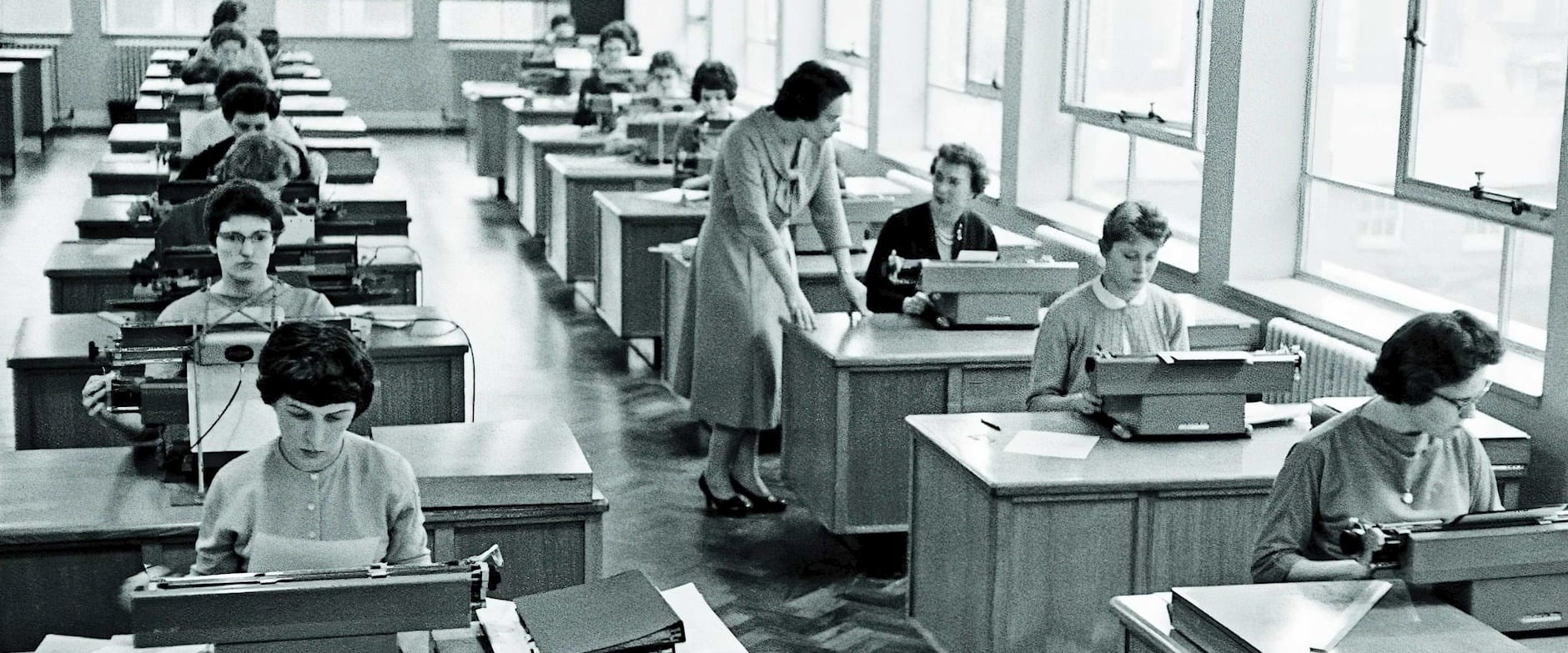I am often asked to opine about whether automation will destroy all the jobs. Yes, we talk about tractors, which brought farm employment from something like 70 percent in the United States at the beginning of the 20th century to about 3 percent today. And about cars, which put the horse drivers out of business. And about trains, which put the canal boats out of business.
A more recent case has occurred to me, however. It’s the one represented by the photo at the top of this page. It may look unfamiliar to some today, but this is what offices looked like in the 1950s and 1960s. Specifically, the photo shows a typing pool, and there used to be basketball-court-sized rooms that looked just like this, all over the place, staffed almost exclusively by women.
Then along came the copier—many of these women are copying documents by typing them over again with a few sheets of carbon paper—the fax machine, the word processor, the PC. And that’s just typing. Accounting involved similar ranks of women with adding machines. Women by the roomful used to operate telephone switchboards, now all automated.
This memory lives on in the architecture of universities. All the old buildings have empty hutches for secretaries.
Business changes, and the workforce grows
Women poured into the labor market despite automation destroying their old office jobs.
If you were prognosticating in or around 1970, and someone asked, “What will happen now that women want to join the workforce, but office automation is going to destroy all their jobs?” it would be a pretty gloomy forecast. But here’s what actually happened: the female labor force increased from 20 million to 75 million. The female participation rate increased from below 35 percent to 60 percent. Women’s wages relative to men’s rose as female workers moved into activities with higher productivity than retyping the same memo a hundred times. Businesses expanded. And no, 55 million men were not out on the streets begging for spare change.
It is true that the male labor-force-participation rate did decline, from 87.5 percent to 70 percent. That’s a big, worrisome decline. But it’s 15 percentage points, while the women’s increase was 25 percentage points. Also, the male labor force expanded from 45 million to 82 million.
Who’s in, who’s out
As women’s participation in the workforce has increased over the decades, the proportion of men working has declined.
US labor-force-participation rate
Percentage of civilian population age 16 and older
US Bureau of Labor Statistics
But even if women were moving in and men moving out of employment, it would just show that you can’t make predictions simply by looking at who has what jobs now that are threatened by automation. The typing pool got better jobs.
This is all a simplification, of course. There were surely some people with specific skills—shorthand, for example—who could not retrain and didn’t do as well as others. There are real problems with the labor market and real concerns for American workers, whatever the color of their collars.
But will automation mean that all the jobs vanish? In the case of the office-technology revolution, even combined with a large expansion in the number of people wanting to work, it did not.
John H. Cochrane is a senior fellow of the Hoover Institution at Stanford University and distinguished senior fellow at Chicago Booth. This essay is adapted from a post on his blog, The Grumpy Economist.
Your Privacy
We want to demonstrate our commitment to your privacy. Please review Chicago Booth's privacy notice, which provides information explaining how and why we collect particular information when you visit our website.
